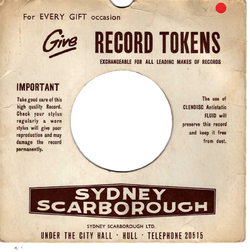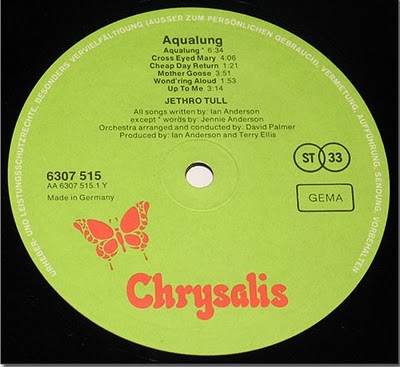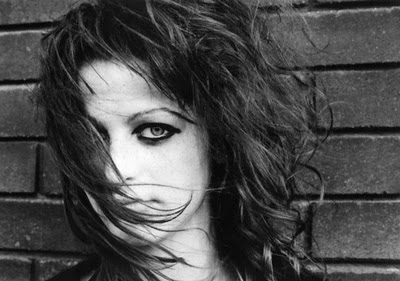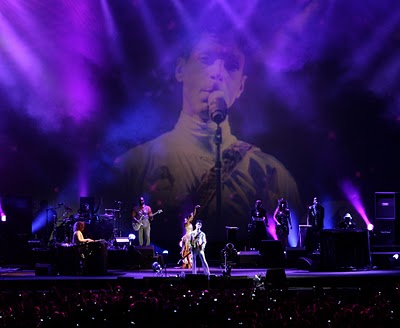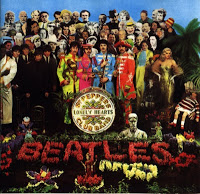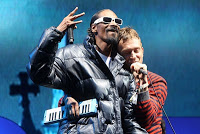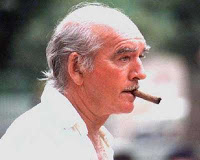Manchester 1965/66
I was clearing out some old files and found a few photos of me I hadn’t seen in a very long time. I don’t know who took them but I worked out they were taken in 1965 or 1966 when I was at Manchester university and living in Cornbrook St, Brook’s Bar. It was a tenement, as you can see, that I shared with Chris Wright and a couple of other students. As Chris and I got to know each other we found ourselves most evenings hanging out together.He was already fully occupied with the local music scene as a social secretary and agent so we went to every club, student dance and concert going, and usually ended our evenings in one of the cabaret clubs, such as Mr Smith’s, where Chris liked to gamble and I chatted to the croupiers.
I began exploring the music scene in Manchester from the moment I arrived there a year earlier. My early discoveries were blues clubs. The Heaven and Hell that catered mainly for dossers and featured bands like The Pretty Things and The Downliner Sect, and the original blues club The Twisted Wheel. By 1965 The Heaven and Hell had closed, probably because it had a separate side room which was available for sex, drugs and sleeping and the Twisted Wheel was a soul club and the main attraction, with it’s now legendary Saturday allnighters. The Abadi brothers who ran the club printed the posters for Chris’s student union gigs so we were welcome at the Wheel and we were regulars. It was packed with mods from all over, apart from Manchester they came by train from the surrounding towns Rochdale, Bolton, Bury, Wigan, Stockport and Leeds, dancing all night on purple hearts and taking the first trains home on sunday morning. Books have been published listing every act who ever appeared there. No need to try to remember who was on you can just look it up, but there were truly unforgettable nights. The artists who played there, mainly touring American soul artists like Ben E King and Wilson Pickett, experienced an atmosphere they couldn’t find anywhere else and they were incredible performers even when they were doing three shows a night.
Otis Redding’s ‘Otis Blue’ album was just available on import then and was played constantly in Cornbrook St. It seemed to take over our lives. When Otis sang Sam Cooke’s ‘Change Gonna Come’ we truly believed that change was inevitable, and most relationships, however brief, had ‘My Girl’ at their heart. It’s not possible to overestimate the influence the blues and soul explosion had on our lives and attitudes. It certainly inspired a lot of British bands who played at The Wheel, bands such as Long John Baldry and the Hoochie-Coochie Men who segued into The Steam Packet, Geno Washington and the Ram Jam Band and Jimmy James and the Vagabonds featuring Count Prince Miller, but really too many to mention. We saw an entire generation of great British musicians for the first time, usually followed by breakfast at the Oxford St cafe. It’s where Chris got his start in the music business, and I soon followed him.
I can remember the excitement of course. In those days Top of the Pops was recorded at a church hall in Fallowfield and Cecil Korer the floor manager was in the habit of dropping in to the student’s union and giving us passes to dance as the audience. I was on television. When I look at the photos of that time I don’t have any idea of what I was thinking, or if I even was. How could I know how long it would last or where it would lead. It was just great to be there and I loved the ride. I wonder what that young man would make of the person I became. I have no way of knowing that of course. Sometimes I suppose you’ve just have to go with the flow.
Buying music in Hull
I was born and spent my first seventeen years in Hull. I was back there briefly in when my son was filming in a local Police Station and staying on Newland Avenue where I was brought up. Newland Avenue was where my father took me to the bike shop to buy a Dansette multi-change record player for my 16th birthday, justifying the extravagance to the shop keeper on the grounds that it would keep me off the streets. It may have had the opposite effect. I’d heard 78’s at my aunts but now I began buying 45’s from the record shop in the town centre Sydney Scarborough’s. It wasn’t a regular occurrence so I had to choose very carefully. Buddy Holly was never a disappointment and I always liked Duane Eddy EP’s like ‘Rebel Rouser’ and ‘Peter Gunn’. They had 4 songs and wonderful sleeves and that made them to my mind great value. I think that’s why the first first album I bought was ‘Duane Eddy plays Songs of our Heritage’. I suppose if not the title then the photo on the sleeve of him with an accoustic guitar sitting in front of a covered wagon should have told me that this wasn’t an album of twangy guitar. I got over my initial disappointment. I’d made my choice and lived with it. I played the record a lot and came to love it dearly. Many of the songs ‘John Henry’ ‘In the Pines’ “Streets of Laredo’ have kept recurring since, have a listen to Kurt Cobain’s version of ‘In the Pines’ called ‘Where did you sleep last night’ it is truly desolate, and if you can be bothered look at the history of ‘Streets of Laredo’ in my piece on Frankie Miller ‘A Long Way Home’.
About the same time I met my first band. A friend took me round the corner to a house on Springbank Ave where ‘The Watersons’ were living. I didn’t know who they were or how important they would become but I loved the atmosphere they lived in. Someone arrived with a fox on a lead whilst I was there, but I was transfixed by the Sonny Boy Williamson’ autograph on a scrap of paper stuck above the mantelpiece with all the power a holy relic. It had never occurred to me that I could be that close to a legend. I didn’t know it then but this bohemian, artistic, musical world would quickly become the life I wanted.
Ari Up
photo by Caroline Coon
I met her mum Nora when she came into the Chrysalis office in 1970. It wasn’t many years later I was watching The Slits on a double bill with Siouxie and the Banshees in Croydon.Sadly its now an obituary. Simon F has written something on his blog http://yammer.blog.co.uk/ that I thought I might reprint below.
“Lead singer of radical post-punk girl-band ‘The Slits’, Ari has a special place in my heart. The reason? I was a member of The Slits for 24 hours. It’s a terribly long story, and one I might write about another time. Suffice to say, they were looking for a drummer to tour with them after the recording of their seminal album ‘Cut’. Budgie, who had played on the record, had commitments with The Banshees, hence his unavailability.
I had met with their then extraordinarily-glamourous guitarist, Viv Albertine, who had checked me out by dragging me to a screening of Samurai movies at The Electric Cinema (light years from being a members’ club). Having evidently passed muster, I was then auditioned at a rehearsal room in Pimlico. Naturally I was terrified, and remember Ari howling and leaping around the room in a sort of free-form scat-toasting capacity, with me trying to figure out what was the verse, chorus or middle eight, only to realise such structures were wholly irrelevant to her. Nevertheless, she took pity on me, was extraordinarily sweet, and announced that I had the gig, only for me to receive the news the next day that the quite-brilliant drummer, Bruce Smith (then of The Pop Group and later of P.I.L), would be doing it instead.
Secretly I was relieved. Ari was on a powerful trajectory that I knew I would never be able to keep up with.
I am delighted to read she kept shining for the rest of her life.”
PRINCE Nikaia,Nice July 2010 The Sacred and the Profane
In the last 3 or 4 summers I’ve seen a few great shows in the south of France. Bob Dylan played at Le Cannet an unprepossing suburb of Cannes in a municipal hall called La Palestra that seems to have been mainly used for boxing tournaments. He was amazing in the way only he can be. I saw the Rolling Stones play the stadium in Nice. They beat the previous attendance record of 50,000 plus formerly held by U2, which they had themselves taken from the Stones, and which they were likely to have regained had they played there July 15th this summer, as was originally planned. The Stones show was extraordinarily well structured to allow a bunch of over- sixties to play a 2 hour stadium set,with solos, solo spots, accoustic sections and multiple changes in stage sets. The two key 20 minute bursts at the beginning and especially at the end surprised even my ‘seen it all before’ persona and I found myself with my mobile in the air during ‘Sympathy for the Devil’ for my wife, who was at home, to hear. By the way that can’t be said of supporting band Kasabian.Their singer came out dressed in black, which ensured none of the crowd could see him, as opposed to the Stones who all wore something glittery or shiny and could be seen from anywhere. He then announced ‘Bonjour France’ or something like that, and immediately lost the crowd,whereas Mick Jagger came out and made a 5 minute intro in perfect French, along the lines of ‘good evening,its a beautiful evening here on the cote,we’re here to rock and roll etc…’ and had the audience eating out of his hand before he’d sung a note. When the singer got to ‘we’re Kasaaabian’ in that horrid mock manc drawl they’ve all affected since the Gallaghers it was all over,certainly for me.
Given how memorable Dylan and the Stones had been I rolled up to Prince with some excitement. I’d seen him a few times before and I’m a huge fan, but hadn’t seen him for a while.
Rumour in Nice Matin suggested Prince had wanted to be part of the ‘Jazz at Juan’ Festival which was celebrating its 50th Year Anniversary since its beginning in Antibes in 1960,and this was the closest he could get. Starting with Sidney Bechet and followed by Louis Armstrong,Dizzy Gillespie and many others this has been one of the greatest jazz events in history and its no surprise that someone as intimately connected to the traditions of his music as Prince should want to pay tribute by participating. He managed on the night to do a good deal more than that, opening with ‘Purple Rain’ he stormed through ‘Let’s Go Crazy! Pt1’ into ‘Delirious’ then ‘Let’s Go Crazy Pt 2’ and followed that with ‘1999.’ I danced for two hours.
I’d been listening to Sam Cooke live at the Harlem Square Club in Miami in 1963. He had the gospel feel and fervour that he had when he was in the Soul Stirrers, but of course by 1963 he was also a musician of the flesh “Don’t fight it…feel it. Don’t fight it…feel it!” he called to the crowd, and to himself. The contradiction between doing God’s work and the Devil’s work runs right through the music coming directly from the blues and gospel dichotomy. It runs through Prince’s music to, and the atmosphere at the gig was as close to the Harlem Sq Club as a stadium show could be. “Dearly beloved we are gathered”…I had seen Prince play a club date in Camden Town in the ’80’s,an aftershow party following a Wembley Arena concert at which he went on at 1.30 and by 4.30 was into an extended version of The Temptation’s ‘Just My Imagination’. Prince’s knowledge,respect and command of his music tradition showed in Nice. Just as Bob Dylan’s ‘Theme Time Radio’ show demonstrated the enormous depth of knowledge and the inspiration he can draw from, so Prince’s love of jazz, gospel, funk, r&b,rock and soul shines through his music, as his encores after ‘Little Red Corvette’ and ‘Kiss’ showed, including songs from the Jackson 5, ‘Everday People’ and ‘I Wanna Take You Higher’ from Sly & The Family Stone and finally ‘Dance (Disco heat) by Sylvester. Actually Bob Dylan who is reportedly unhappy with video screens could take a tip from Prince’s brilliant use of video technology. He had screen behind the stage so we watched the close-up through the live band and stage lighting which meant it was able to intensify the visuals rather than distract.
We read a lot about the ‘strangeness’ of Prince’s life.Just recently he has been criticised for ‘giving his new album away’ and casting doubts on the internet.It’s always interesting with him, remember the Prince merchandising shop in Camden market? In Nice he checked out of his hotel because the decor offended him, probably correctly. Does any of this obscure his place amongst the greats of music? No. He has listened carefully and has with courage and dedication forged a unique contribution to music,and earned his place, not just amongst the stars, but amongst the legends. Salut!
Mercury Music Prize
It rolls out every year with an announcement in the ‘off season’ which guarantees it lots of attention, followed by an award show quickly enough to hold that attention. Or does it?
I wondered. I called Simon F an ex-music journalist, ex-muscian, ex-video director and writer for an opinion. His first reaction was abusive, however when I asked for a quote I got “wake me up when its over”.
Looking down this years list and as usual I’m irritated. Why does the formula have to be repeated so slavishly with all the usual nods in all the usual directions, one credible pop, a couple of neo-folkies a token look at contemporary jazz, trendy alternative one etc etc.? It’s in a competitive area agreed, Mojo, Q, NME,Ivors,MOBO’s and Silver Clef (google it) amongst many others celebrate the Brit music scene and I suppose they have to maintain their brand very carefully. It is after all the Barclaycard Mercury Music Prize.
I think my irritation is because the Mercury Prize reminds me every year about something that I do care about. As someone who has been actively involved with British music for a very long time I’m unhappy about the inability of the music industry to properly recognise and archive the achievements of it’s music community. America has very many awards shows but nestled in there is the ‘Rock and Roll Hall of Fame’. I’ve been to that show a few times, I saw Pete Townsend induct the Rolling Stones beginning his speech with ” I hate that bastard Mick Jagger”, Lou Reed induct Dion with an atmospheric poem composed for the occasion, and Little Richard induct his neighbour from Macon,Georgia Otis Redding. I could go on. I have never failed to feel humbled and proud of my involvement with music at that event. I believe the UK music community deserves the same attention and respect, and feel the UK music industry has been short-sighted in not combining its efforts to find ways to properly celebrate its creative legacy. There is a British Music Experience at the O2 I could recommend to you, but that’s it.Its not something that can or should be left to the media, most of their coverage of music is either hagiography or pop sociology,with no real sense of music as an artform.
Perhaps if a UK MUsic Hall of Fame existed the Mercury Prize would be free to present a genuine annual debate about the state of the art in music, to discover and award the most creatively significant albums of the year? Let’s face it we need such a debate. The fact that so many releases can be tagged so readily tell us that niche marketing rules, and new artists are in danger of being sucked into style tunnels when they should be heading off into the great unknown.The frantic commodification of music is depleting the creative activity. The discussions around both art and literature are more intense than the music discussion these days aren’t they? I’m worried about Simon F’s quote but I’m more worried about the quote from Lou Reed’s friend Donald “stick a fork in their ass and turn em over,they’re done”.
Bob Lefsetz Blog
I don’t know what the rules are regarding posting other people’s blogs but I’m hoping Bob won’t object to my posting part of his blog today. If you’re tempted to subscribe after reading this post let me warn you…he is relentless. I don’t mind myself, I often find myself learning something, and the delete button is an easy option His tone has all the passion of a rabid fan who is absolutely beside himself at having found himself able to peer behind the stage curtain, and is thrilled and horrified by what he sees.
Today’s Bob…
”The goal in life,’ Mr. Walker said, ‘is to work for yourself, and with your friends.'”
http://www.nytimes.com/2010/08/07/arts/music/07lolla.html?_r=1&ref=todayspaper
Corporatization killed the music business.
Come on, the business was built by entrepreneurs. Everyone from Ahmet Ertegun to Brian Epstein to Robert Stigwood. Forces of nature, these were go-getters with no backing, who needed to make it purely on their wiles.
David Geffen and Irving Azoff were no different.
But then all the labels were bought by corporations, after the Fortune 500 realized how much money there was in music. One can argue that the music died in the early seventies, when Elektra and Atlantic and Asylum were fully integrated into Warner.
Or, one can go later, to when Island and A&M were bought out by PolyGram, and Alain Levy ignored Chris Blackwell and Jerry Moss. Chris Blackwell? He started off selling singles from the back of his motorbike. Not only did he sign Traffic and so many other English acts, he made Bob Marley mainstream, by backing him up with rock players. Blackwell wasn’t just a businessman, he was a creator, with only his own bank account to fall back upon. Ditto with Jerry Moss. And isn’t it interesting that Jerry is successful in another field, horse racing: http://www.dmtc.com/racinginfo/pr/index.php?article=14handsofloveon17handsofpower
The last great hope of individual entrepreneurship in the music business occurred with rap. Russell Simmons did it his way. Because the corporate behemoths were not only not interested in his way, they weren’t even interested in the music, they certainly didn’t get the culture, they just wanted good-looking automatons who could be featured in expensive videos on MTV.
He didn’t mention CHRYSALIS! You can subscribe at htpp://lefsetz.com/list?p=subscribe< com="" p="subscribe">
GLASTONBURY 1970-2010
My first festival was the Cleethorpes Jazz Festival in 1963. I’d read ‘On the Road’ by Jack Kerouac and decided that’s the life I wanted. Going to Cleethorpes seemed a step in the right direction,on the beatnik trail. I don’t remember how I got there,whether I had a ticket or just gatecrashed, but I do vividly remember the sleeping rough and listening to Johnny Dankworth and quite a lot of the trad jazz that was popular at the time. It was the year the Stones were the first rock and blues band to play the National Jazz Festival at the bottom of the bill, I wasn’t there but I heard on the grapevine they were a sensation. They topped the bill the following year, I suppose that makes it the first rock festival. Since that time my festival-going has always been in a working capacity and I’ve never since shared the experience of camping out for three days listening to bands and hanging out and all that.
I’ve been to the Glastonbury festival a few times. I’ve had good experiences there. The Waterboys were regular performers in the mid- 80’s. Most memorably Spiritualised headlined the NME stage on the closing Sunday night for two consecutive years in 1993 and 1994, with incredible performances. Jason Pierce playing along with and through the fireworks display in 1993 was literally astonishing. My main impression of Glastonbury has always been the atmosphere amongst the crowd.I’ve never failed to leave the festival without being reassured by the generous good spirits and enthusiasm of the,mainly young, audience.
I was there again this year on the 40th Anniversary,my second only festival as a spectator,to see Gorillaz headline the Friday night. I hadn’t been to Glastonbury for perhaps ten years and I was a bit shocked when I arrived. The site has grown exponentially, someone told me its now somewhere between 800 and 1,00 acres. The support services have grown along with it,endless fences, security checks, trucks,acres and acres of catering stalls and BBC outside broadcast vans as far as the eye can see. I wandered around a bit, but on a site of this size I found it slow to and difficult to get round and bumping into people I knew, Mike Pickering and his mates watching the bands and the World Cup, was a bit of a surprise. I saw some of Vampire Weekend, a fair bit of a pretty routine performance from Dizzee Rascal (including a surprisingly lacklustre duet with Florence) and Gorillaz.
I hadn’t seen Gorillaz before, and as they came out I realised that neither had most of the more than 120,000 crowd. At the same time I also realised many of them probably hadn’t heard the latest album. My jaw dropped a bit. Its bold going out on a headline stage with a new band and new album even for Damon Albarn. It turned out not to be a cartoon band relying on digitally generated visuals,but a kind of musical and social tour d’horizon.The featured artists included Mos Def,Mark E Smith of The Fall,Bashy,Kano,Bobby Womack,Shaun Ryder of Happy Mondays,Snoop Dogg and Lou Reed backed by a band that included Mick Jones and Paul Simenon. Exploring social issues via the intersections of contemporary pop music over the last two or three decades made for a fascinating show.I’d listened in the sound booth and making make way back during the last song the crowd seemed as engaged as I was, enough for me to be dragged into dancing quite a lot on the way.I loved that, and I was elated. It helped with all that hanging out I hadn’t done.
I got back to London on Saturday evening in time to have dinner with my close friends and neighbours Sarah and Sandy Lieberson. We chatted about Glastonbury. Sandy had produced the first film about the Glastonbury Festival, not the first festival in 1970 but the second in 1971 directed by Nic Roeg, and remembered something that really struck me. He told me that in 1971 there was free water, milk, juice, tea and coffee for everyone at the festival. That impulse seemed so at odds with contemporary festival economics. I suppose I shouldn’t have been surprised, after all it began in 1970, and was inevitably influenced by the counterculture of the time. I’d been reading about the history of the counterculture in Barry Miles’ book ‘London Calling’. He writes about a conference called the ‘Dialectics of Liberation Congress’ held at the Roundhouse over two weeks in 1967.It covered topics such as Gregory Bateson proposing the theory of global warming saying it would be at least 25 years before the effects would be noticed, R D Laing and David Cooper discussing the pressures of society on the individual, John Gerassi and Paul Sweezy discussed monopoly and global capitalism and Herbert Marcuse spoke on ‘Liberation from the Affluent Society’.The instincts, ideas and impulses behind that meeting have driven our contemporary culture, thank goodness. Nuclear disarmament, global warming and the problems of global capitalism are now the central issues for all governments so the counterculture was influential in those topics, although I don’t know where we are on the liberation of the affluent society.
I found myself wondering about the impulses that created Glastonbury and have driven it forward.On the one hand the virtues of an undoubtedly good and eclectic booking policy, continued commitment to social issues, support for charities, great staging, care for the community attending and massive enthusiasm from headlining musicians, who all perform for perhaps less than they earn elsewhere, has given succeeding generations a great festival and an invaluable rite of passage. On the other hand it is now firmly located as an expensive social networking opportunity with all the overtones of celebrity society. Gorillaz were roundly criticised by the media for their show. Since it was a first I’m sure it will get better, but they were criticised for their risk taking, for not playing the crowd pleasing anthems the media felt the audience wanted. That seems to me to make assumptions about what Glastonbury has become.There are now lots of independent festivals using a similar model to Glastonbury all trying to present an alternative face. I don’t know anything about them although I gather that at the Hop Farm Festival that Van Morrison and Dylan played people were searched as they entered to make sure they didn’t bring their own drinks depriving a corporate drinks sponsor of captive sales. I also notice they run a military display a couple of weeks after their festival called The War and Peace Show. I suppose I question the impulses behind of all of this activity.How real is the committment to social causes and how much of it is simply a corporate culture looking for consumer-friendly branding? I’m sceptical now about all this, and it may sound odd given how many artists are playing these shows, but how central is music actually to it?
Barry Miles quotes Emmett Grogan, representative of the San Francisco Diggers, addressing the Dialectics of Liberation meeting thus “Our revolution will do more to effect a real inner transformation than all of modern history’s revolts taken together!…Nobody can doubt the fact that during the last year,an environmental revolution of the most momentous character has been swelling like a storm among the youth of the West…Power to the people” Grogan got an ovation, he waited til it died down then said “I neither wrote nor was the first person to have given this speech…I do know who did, it was Adolf Hitler and he made his delivery of these same words at the Reichstag in, I believe, 1937.Thank you and be seein’ ya’ ”
Liberation from the affluent society isn’t a matter of of presentation.It may need a different starting point and also take a little more rigour in our choices. Its not just a consumer choice is it?
MIDEM 2010
It was a much smaller MIDEM than its been in the past.It’s still the largest and most focussed opportunity the music biz crowd has to trade and make new contacts around the world, its just that at this precise moment there are fewer of them.The Croisette at Cannes and its Palais du Festival was noticeably less frenetic,however its future is in no doubt as the French cherish their institutions and know that if you preserve them they will become modish again. So if you haven’t been there’s still time. My wife finally went some years ago. She was visibly shocked by the crowds.”Who are those bulky men in tight jeans,the ones with leather jackets and pony tails?’ she asked “the Germans” I replied.”Some people seem quite desperate” she commented,”Yes they still haven’t closed the deal that will pay for their trip” I replied. I’ve been to many, many, MIDEMs but they all merge into a single episode of handshakes, snatched conversations and hangovers. I’m sure everyone has those same trade show experiences, lifelong friends, business partnerships and spurious enmities are nurtured in that strip of the Croisette and the attendant hotels and restaurants.I have met and re-met many wonderful people at MIDEM, often in the same year. I remember vividly the first meeting of the Chrysalis delegation, Chris Wright,Des Brown and myself with Monti Lueftner head of Ariola Germany (pictured above with Liz Mohn) who,in a pitch to licence our label, instantly proceeded to outline his ambitions to create a new WEA (Warner Elektra Atlantic the then industry giant led by Steve Ross supported by Mo Ostin and Joe Smith at Warner Bros, Jac Holzman at Electra and Ahmet and Neshui Ertegun at Atlantic). This was heady stuff, indeed Neshui was strutting his stuff that MIDEM with his close friend Pele in tow. Monti went on, supported by his friend and employer Reinhard Mohn the owner of Bertlesmann,to add Arista and RCA to Ariola to create the Bertlesmann Music Group, as well as licencing Chrysalis and supporting us loyally. A case of what starts at MIDEM having repercussions, not least a long,entertaining and generous partnership between him and us. He became the third of our Chrysalis kameraden,the German music business folk with whom we built our own personal post-war reconciliation. The first was Fritz Rau the rightly legendary German concert promoter whose autobiography is unfortunately only so far available in German, and the second being Ossie Drechsler, for a time MD of Polygram Germany. I continued my relationship with Monti through my ‘Dedicated’ joint-venture with Bertlesmann until his retirement party in the Munich Hilton in the mid-90’s.
Apart from nurturing close relationships MIDEM has had another and more profound effect on my life, the discovery of the Cote D’Azur and its lifestyle. A childhood in Hull does not prepare you for lunch on the beach in January, particularly when you’re invited to Eddie Barclay’s birthday party. Eddie (pictured above top) was the top French music producer, musician, businessman and a leading figure in French society. He managed nine marriages as well as the best parties,including his famous ‘Soirees Blanches’ at his home in St Tropez. His MIDEM birthday party involved lunch at Tetou the fish restaurant in Golfe Juan,where you eat bouillabaisse. “What is it?” I asked, “Fish stew ” I was told. A regular Hull diet of fish and chips did not prepare me for this either.The process of discovery continued over lunch with the Dutch at L’Oasis in La Napoule where Louis Outhier was the chef, and this peerless genius produced Loup en Croute. I was a bit abashed by all this and frankly uncertain,but I knew I would be back for more.


